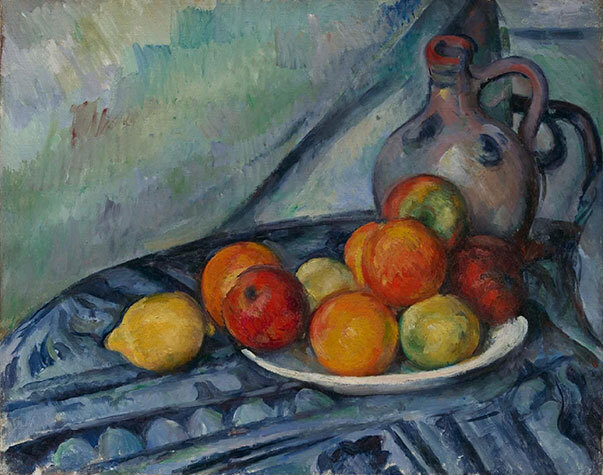“Something profound was in the making.”
So recalled the American artist Charles Sheeler after seeing the work of Braque, Cézanne, and Picasso for the first time. Sheeler encountered these European modernists while visiting Paris in 1908. To the young artist, their “strange pictures” were a revelation for which, he later wrote, “no amount of description…could prepare me.”

We think of Sheeler as a precisionist, as the engineer behind the tight, clean lines of urban scenes like View of New York, from 1931. But look at Three White Tulips, a Sheeler work from 1912: with its simple composition, flat space, and patchy background where warm purples and lavenders bleed into cool blues and greens, it could be mistaken for a still life from Cézanne or a young Picasso. Sheeler’s early work suggests that, before arriving at his signature style, he tried his hand at the new way of seeing that he’d discovered in Paris.
Young Sheeler in Paris, eyes agape, makes me think of what it is like to experience something radically new for the first time. Many of us have probably had versions of Sheeler’s revelatory experience. Perhaps you’ve seen a work of art, read a novel, or listened to a song that sweeps you off your feet and changes your sense of possibility. Museums are good places for this kind of encounter. So are concert halls, and—as made more apparent these days—so are Instagram and the Internet.
Seeing art nourishes artists. Sheeler needed Braque, Cézanne, and Picasso to become the Sheeler we know. It’s a truism that makes me wonder about the present: What are people seeing and responding to now? Is there room for revelation and encounter at a time of quarantine and isolation?

Artists are facing real challenges, but many are also finding time to experiment in the studio and share their work in new ways, creating opportunities for revelatory encounters every day. I have been inspired by Kara Walker, who is grappling with the pandemic through a series of powerful new drawings and posting them on Instagram; Luc Sante, who has written beautifully on the “calm of collaging” in quarantine; and, maybe most remarkably, the German pianist Igor Levit, who has streamed more than 50 concerts from his home. This is likely just the beginning of a new wave of artists and performers sharing work in progress, opening the world to raw thoughts and unfinished ideas as never before. It seems almost certain that ours is a moment when—to paraphrase Sheeler—something profound in the making.
